Make It Do – Shoe Rationing in World War II
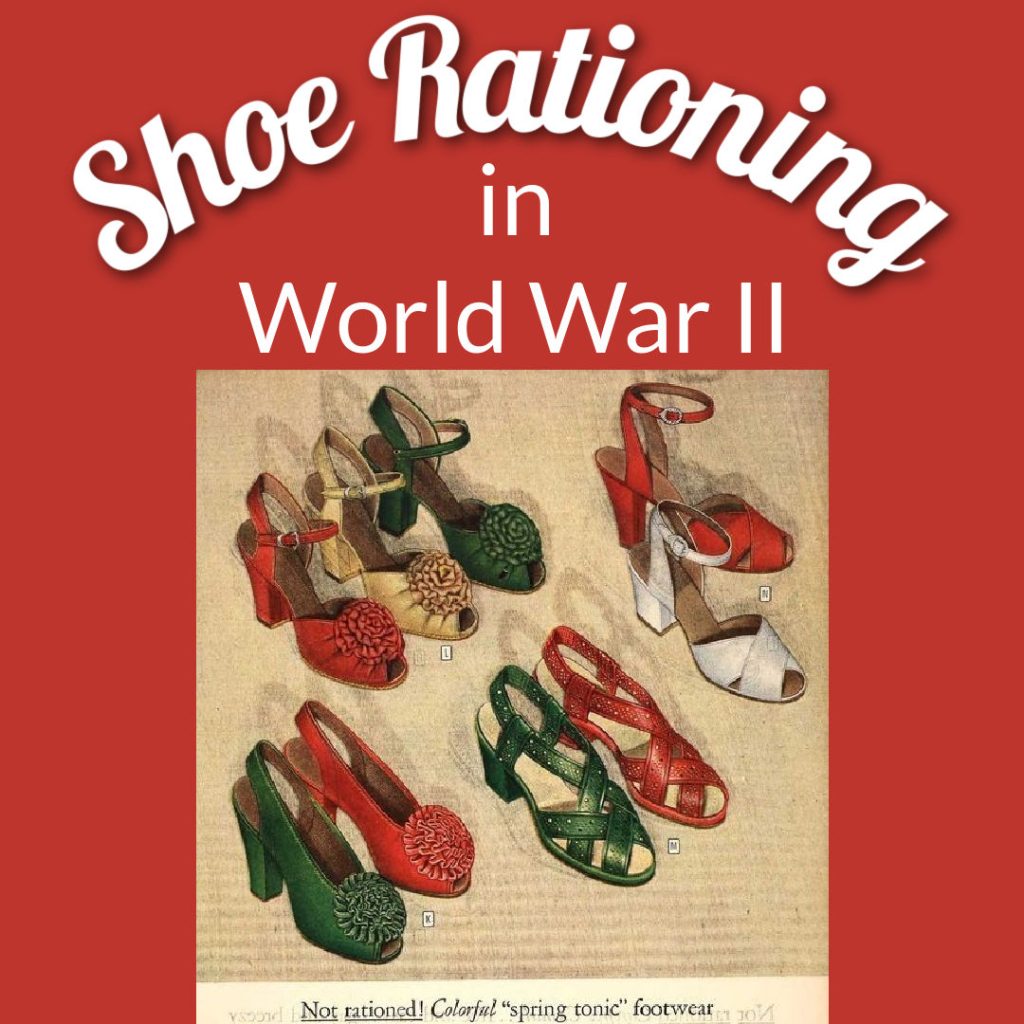
During World War II, many items were rationed in the United States, including shoes.
Why Shoe Rationing?
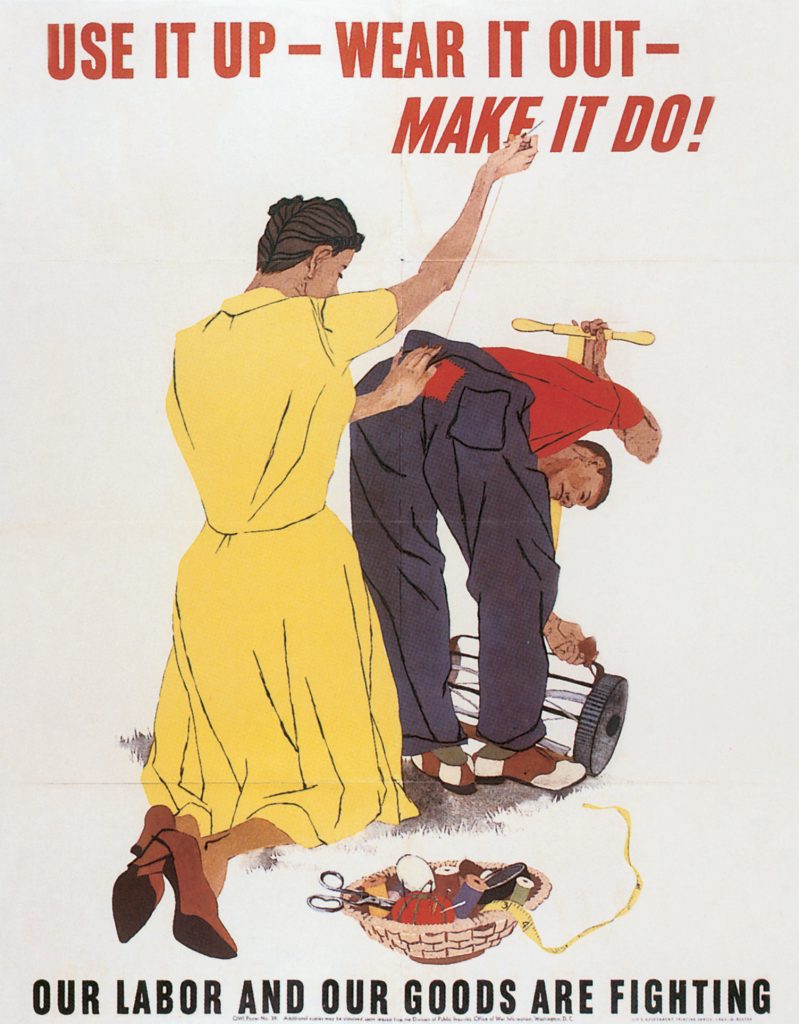
US poster urging mending clothes, 1943
Due to the serious rubber shortage (Make It Do-Tire Rationing in World War II), footwear made of rubber or with rubber soles was rationed or unavailable. Also, the military had a high need for leather, not just for shoes and combat boots, but for those popular leather flight jackets. As a result, civilians made do with less.
Rationing of Rubber Footwear
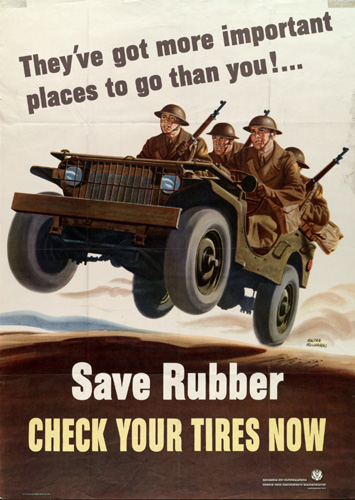
US poster encouraging conservation of rubber, WWII
Starting September 30, 1942, men’s rubber boots and rubber work shoes were placed under rationing. To obtain a new pair, a man had to apply to the local ration board, prove he needed the shoes for essential industry—not for sport—and turn in the old pair. Galoshes and overshoes were not rationed because they used less crude rubber, but sportsmen couldn’t purchase boots, and sneakers were no longer produced.
Shoe Rationing
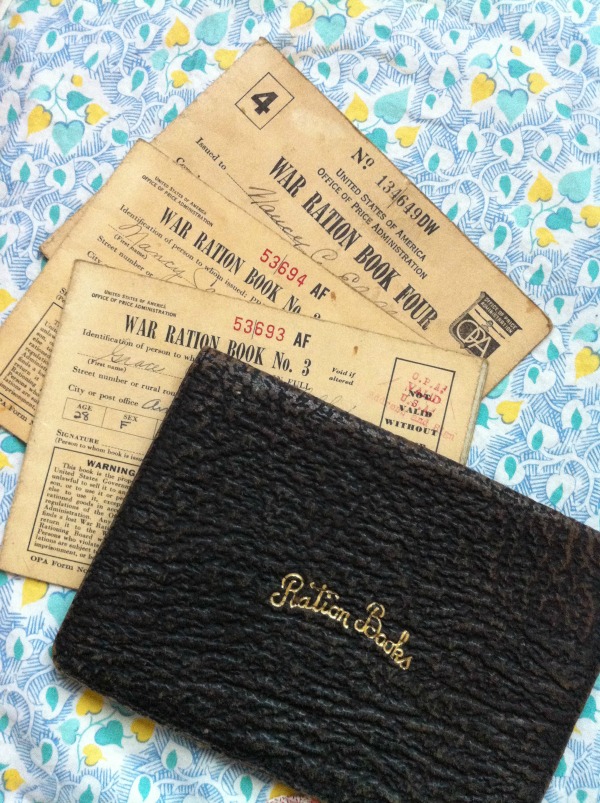
US rationing books owned by my mother and grandmother, WWII (Photo: Sarah Sundin)
On February 7, 1943, the United States instituted rationing of leather shoes to begin on February 9. Each man, woman, and child could purchase up to three pairs of leather shoes a year, using designated stamps in War Ration Book One, and later in Books Three and Four. To simplify the system, only six shades of leather were produced. However, the supply of leather continued to decrease. On March 20, 1944, the ration was reduced to two pairs of leather shoes per year. Shoe rationing continued until October 30, 1945.
Exceptions
The strict rule that the ration stamp had to be torn from the book in the presence of the retailer was lifted for catalog purchases. If you wanted an extra pair of shoes, you had to fill out a long application at the ration board, listing every pair of footwear you owned, and explaining why another pair was essential for your occupation and why another pair was required to prevent serious hardship.
What about Children?
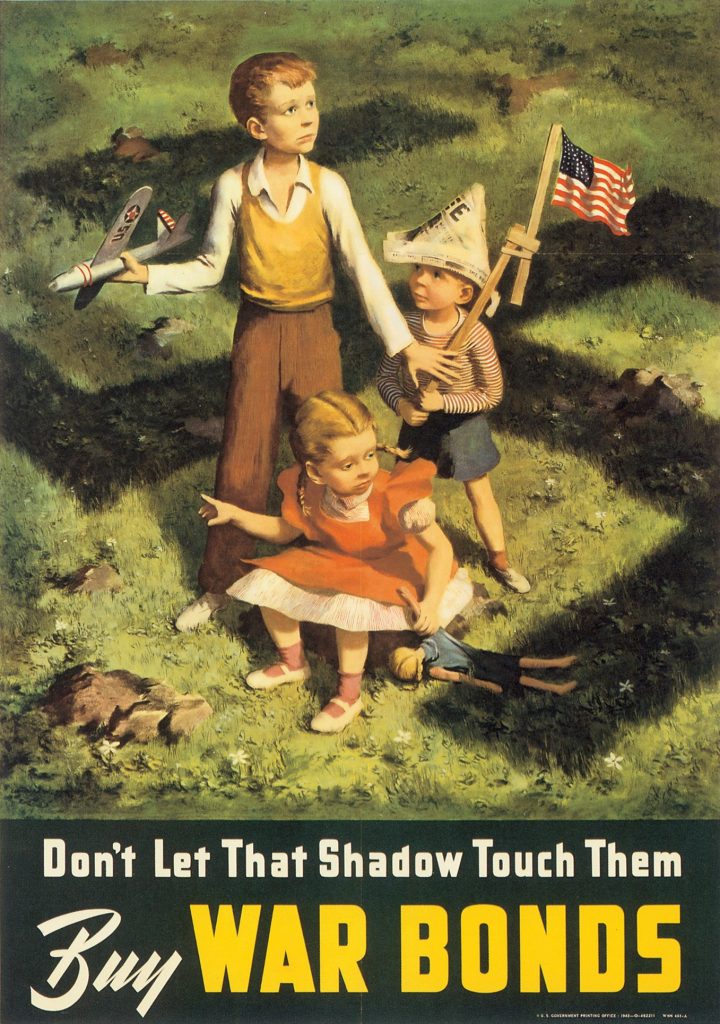
US poster promoting war bond sales, 1942
No exceptions were made for children and their rapidly growing feet. Families pooled their stamps, and adults made do with fewer shoes to provide for their children’s needs. However, pediatricians and podiatrists complained publicly that shoe rationing would produce a generation of “foot cripples.”
Making Do
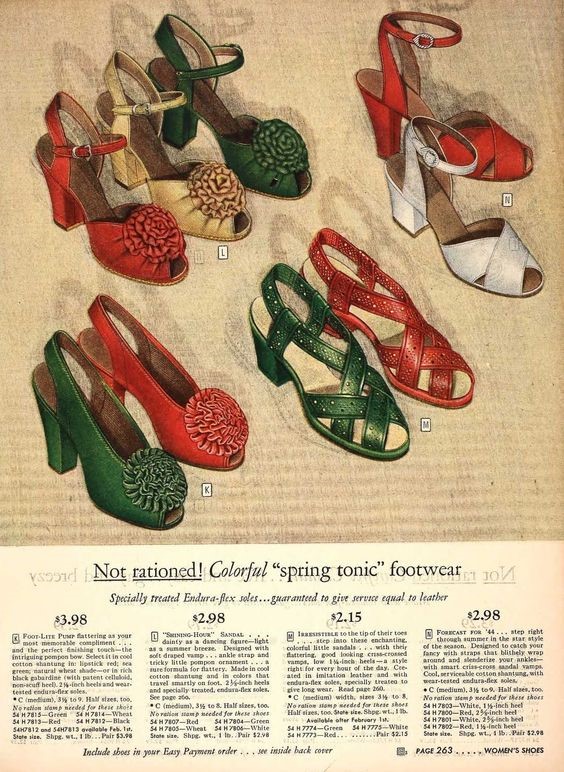
Ad for unrationed shoes, WWII
To make do with less, people took care of the footwear they already owned, keeping rubber boots clean, dry, and away from excess heat or cold, and repairing shoes and boots whenever possible. Shoes made of fabric, such as espadrilles, were not rationed and became fashionable. Women also turned to fabric purses and belts.
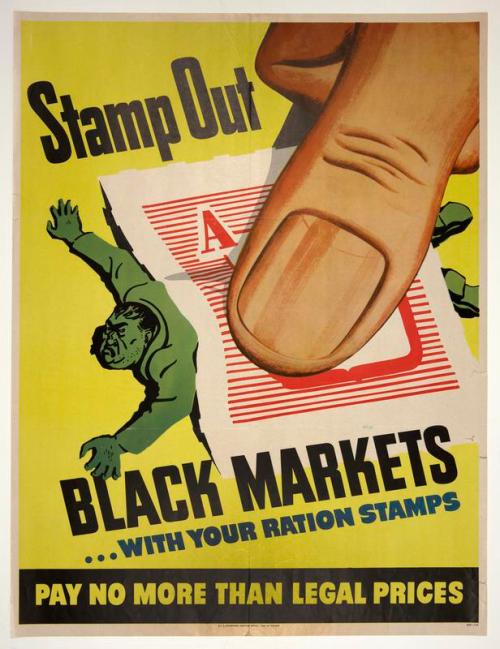
US poster, 1943 (Franklin D. Roosevelt Presidential Library, MO 2005.13.42.2.1)
Some people did not make do. Theft and black market profiteering were a continuing problem. For example, on May 3, 1944, a man was arrested in Pittsburg, California, for stealing seven pairs of shoes from a shipment. The June 8, 1944 issue of the Antioch Ledger reported his sentence—six months or $500.
Tales from a Shoe Store
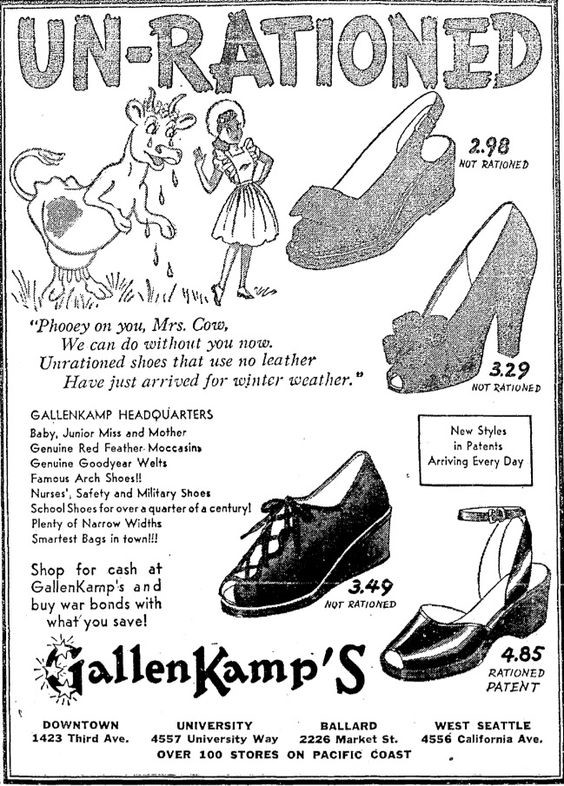
Ad for GallenKamp’s Shoe Store, Seattle Times, 1943
This story comes from Charles Martin, who worked as a stock boy in a shoe store while he was in high school (1941 to 1943). He gave me permission to share his experiences.
“When the current stamp was about to expire, there would be a rush, mostly by women, to buy any pair of shoes, whether they fit or not. Later, when we got in new styles, they would exchange the ones they had bought for the new ones. Finally the store had to put a time limit on how long the first pair could be exchanged. The store would run ads in the paper when a new shipment of shoes was expected, and women would line up that morning to get a shot at the newest. Sometimes things got a little difficult because there would only be a few pairs in the most common sizes. More than once there were unpleasant situations that made the shoe clerk nervous.”


My Mother would talk about the shoe problem as a result of the war. She was born in 1938. She did’t know the details as this article details.
She would express that she would have to put cardboard in her shoes if there was holes in the soles of the shoes
She would have to wear shoes that were too small for het, that curved the sides of her feet & toes as a result.
I will have to ask, my mother’s sister that is nine years older than my Mother, about the shoe rationing book. She is still living, and 91 years old. My Mother is deceased.
Thank you, for this information. It makes it all more clear.
Wow, I enjoyed reading this piece of history. Thank you, Sarah!
This was really interesting! I don’t remember my parents ever mentioning this or reading about it in a historical fiction book about the home front during WWII.
So glad I found your web page. I’m writing of my life as a young boy during the war (1939-45) for the family so they can see how hard it was in the San Fernando Valley (Van Nuys). We didn’t have much and it was rough. Look forward to ‘Make It Do’, certain to help jog more memories. Thanks.